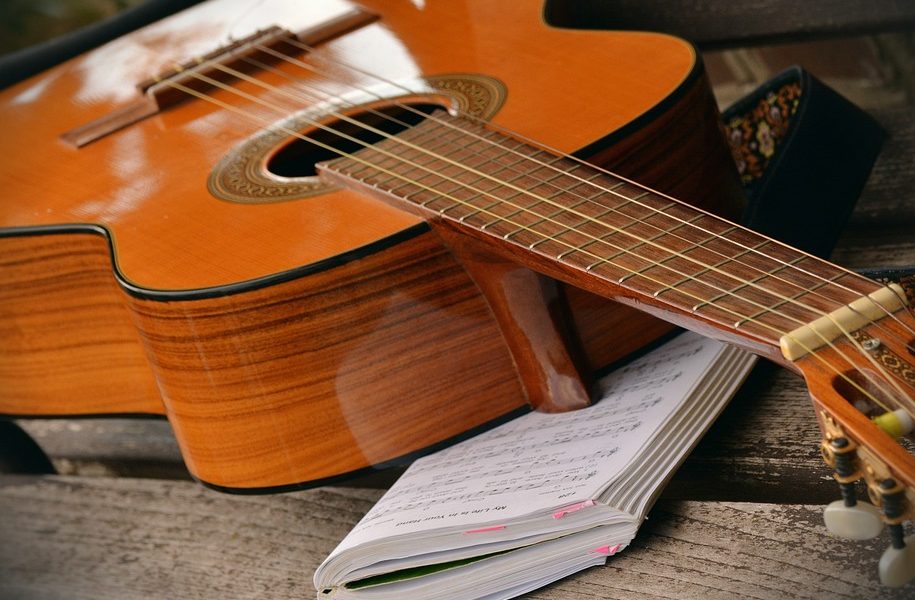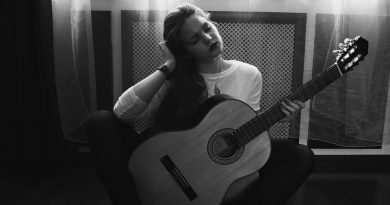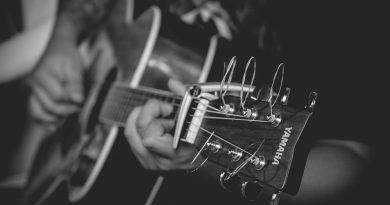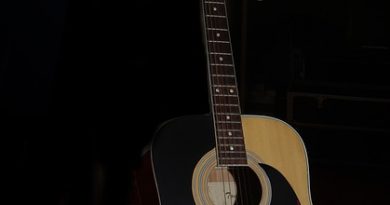Essential Gear: A Guitar Beginner’s Guide to Setting Up a Home Studio
Setting up a home studio for guitar playing can be an exciting and rewarding experience for beginners. Having the right gear can make a big difference in the quality of your recordings and practice sessions. In this guide, we will cover the essential equipment you need to set up a home studio for guitar playing.
1. Choosing the Right Guitar
The first step in setting up a home studio for guitar playing is choosing the right guitar. Whether you prefer electric or acoustic, it’s important to select a guitar that feels comfortable and suits your playing style. Consider factors such as body shape, neck width, and tonewood when making your decision.
If you are just starting out, a budget-friendly option like a Squier or Epiphone electric guitar or a Yamaha or Fender acoustic guitar is a good choice. As you progress, you may want to invest in a higher-end instrument that offers better sound quality and playability.
2. Amplifiers
If you are playing an electric guitar, you will need an amplifier to produce sound. There are many options available, ranging from small practice amps to larger combo amps and even amp modelers that offer a variety of digital effects and tones.
For beginners, a small practice amp like the Fender Mustang LT25 or Boss Katana Mini is a good choice. These amps offer a variety of tones and effects, making them versatile for practice and recording. As you advance, you may want to consider upgrading to a larger amp for more power and tone options.
3. Audio Interface
An audio interface is an essential piece of gear for recording guitar and other instruments in a home studio. It allows you to connect your guitar or microphone to your computer for recording and processing audio. Audio interfaces come in various configurations, including USB and Thunderbolt connections.
For beginners, a simple USB interface like the Focusrite Scarlett Solo or PreSonus AudioBox USB is a good starting point. These interfaces offer high-quality sound and are easy to set up and use. As you expand your home studio, you may want to consider upgrading to a more advanced interface with additional inputs and features.
4. Digital Audio Workstation (DAW)
A DAW is software that allows you to record, edit, and mix audio tracks in your home studio. There are many options available, ranging from free programs like GarageBand and Audacity to professional software like Pro Tools and Logic Pro.
For beginners, a simple and user-friendly DAW like GarageBand or Reaper is a good choice. These programs offer a variety of features for recording and mixing audio tracks, making them suitable for both practice and recording. As you gain experience, you may want to consider upgrading to a more advanced DAW with additional features and plugins.
5. Studio Monitors
Studio monitors are essential for monitoring the sound of your recordings and mixes in a home studio. Unlike regular speakers, studio monitors are designed to provide accurate and flat frequency response, allowing you to hear your music as it truly sounds.
For beginners, a pair of budget-friendly studio monitors like the KRK Rokit 5 or Yamaha HS5 is a good starting point. These monitors offer clear and accurate sound reproduction, making them suitable for mixing and mastering. As you progress, you may want to consider upgrading to a higher-end pair of studio monitors for better sound quality.
6. Headphones
In addition to studio monitors, a good pair of headphones is essential for monitoring your recordings and mixes in a home studio. Headphones provide a different listening experience than studio monitors, allowing you to hear details and nuances in your music that may not be as apparent through speakers.
For beginners, a pair of closed-back headphones like the Audio-Technica ATH-M50x or Sennheiser HD280 Pro is a good choice. These headphones offer good sound isolation and accurate sound reproduction, making them suitable for recording and mixing. As you develop your home studio, you may want to consider investing in a pair of open-back headphones for a more natural and spacious sound.
7. Cables and Accessories
Lastly, don’t forget to stock up on cables and accessories for your home studio. You will need instrument cables to connect your guitar to your amplifier or audio interface, as well as XLR cables for microphones. Additionally, consider investing in a guitar tuner, a music stand, and a comfortable chair for extended practice sessions.
Setting up a home studio for guitar playing can be a fun and rewarding experience for beginners. By investing in the essential gear mentioned in this guide, you can create a space where you can practice, record, and hone your skills as a guitarist. Remember to choose equipment that suits your playing style and budget, and don’t be afraid to experiment with different setups to find what works best for you. With dedication and practice, you can create high-quality recordings and music in your own home studio.






